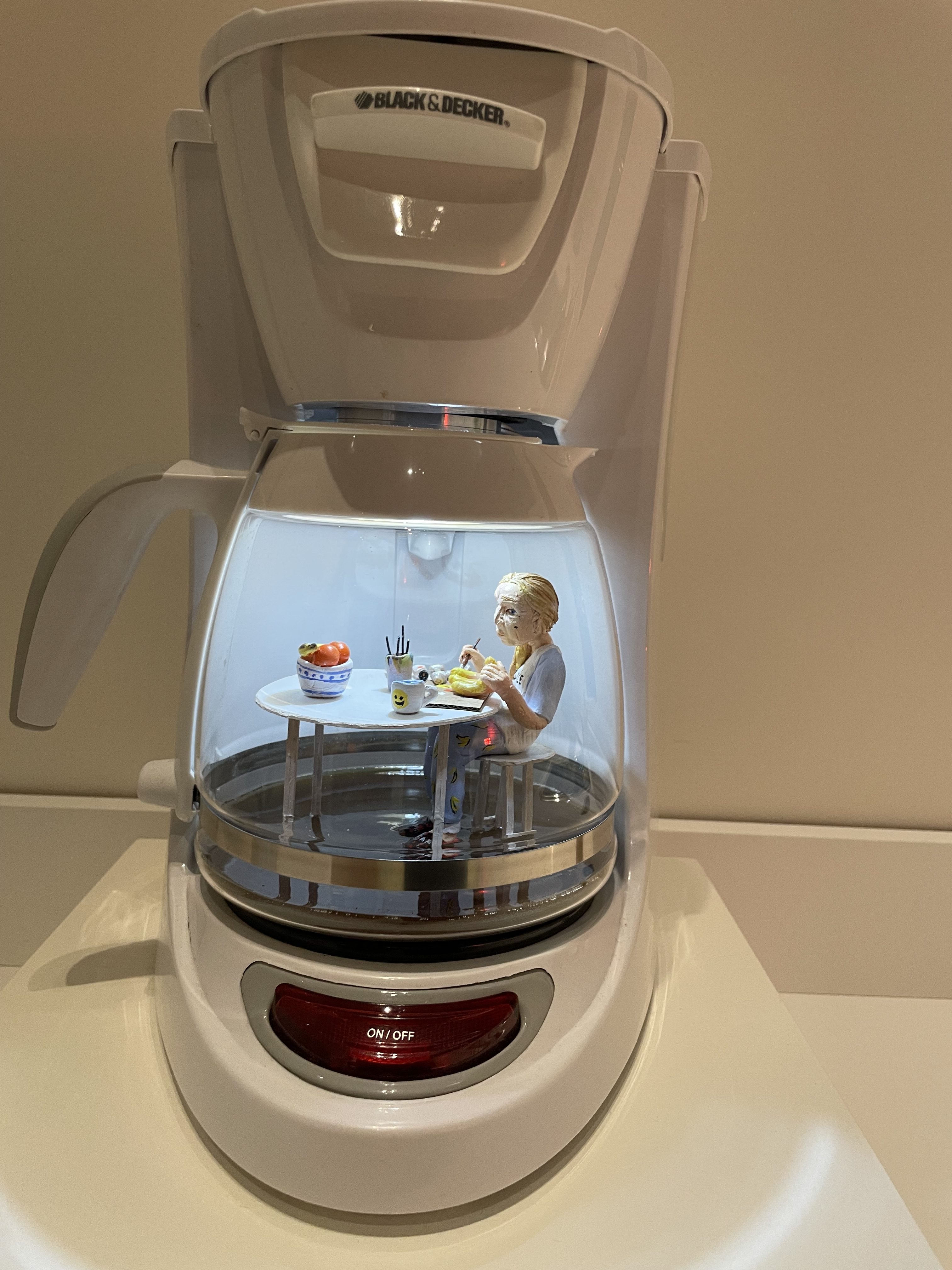UV visits our other friendly neighbourhood museum
The Gardiner Museum is a ceramics-focused museum located just a three-minute walk from the Faculty of Law. Although smaller and less known than its neighbour, the Royal Ontario Museum, the Gardiner Museum still provides an experience that is worthwhile for anyone interested in art or history, especially when you consider that students visit for free. The museum features numerous collections, but our review focuses on Karine Giboulo’s Housewarming, the “European Porcelain of the 18th and Early 19th Centuries” collection, and the “Ancient Americas” collection.
Karine Giboulo: Housewarming

A temporary exhibition that will run until May 7, Housewarming provides a social commentary on the pandemic, consumerism, and human attitudes toward nature, through tiny clay polymer figurines. The Montreal artist also blends in personal pieces describing her own life, including her ankylosing spondylitis diagnosis. She placed the pieces strategically amongst the canvas, which is fittingly spread out and takes the form of a house. Take, for instance, Morning Self-Portrait (2022), where the artist’s image is sculpted into a polymer figurine, and trapped in a coffee pot in the kitchen. Such a placement invites the viewer to consider Giboulo’s interpretation of caffeine dependence and addiction, and relates to an idea that is so entrenched in our society. While the metaphors range in subtlety, each provides a unique look into specific behaviours and attitudes that permeate society. Specifically, the pandemic-related artworks highlight the devastating impact of COVID-19. The pieces detailing Giboulo’s personal life underscore themes of mortality, disability, and the overarching notion of life. Overall, the exhibit is an excellent reframing of serious themes using toy-like clay figurines. While it can be challenging to position one’s self close enough, or in some cases low enough, to the work in order to get the best possible view, it is undoubtedly worth it.
European Porcelain Collection
The European Porcelain Collection provides a historical retelling of Europe’s passion for porcelain that began centuries ago. This “porcelain fever” broke out in the Netherlands and started a craze for imported porcelain from China and Japan. Due to Asia’s early mastery, many European makers subsequently “borrowed” the same styles. The Gardiner Museum does an excellent job of making this point clear by placing the European Porcelain Collection close to Chinese and Japanese ceramics. Overall, this collection provides an excellent physical record of the porcelain trade as well as commentary on the influence of global trade.
Ancient Americas Collection
The Ancient Americas Collection is, in my mind, the most diverse collection. The array of styles—both art style and ceramic type—are notable. For instance, there are figurines depicting men, women, and children, as well as more functional artifacts, such as an incense burner or face mask. The collection provides a detailed look into the historical cultures of Mesoamerica, the American Southwest, Andean cultures, and intermediate areas. The use of photographs in the background of these sculptures helps orient the viewer and provides a useful reminder of the diverse terrain that exists throughout the Americas. This collection allows the viewer to appreciate the sophistication of the high cultures that existed for millennia prior to the arrival of Europeans.
Closing Remarks
The Gardiner Museum is great for spending an afternoon or a break between classes. The museum’s collections help one learn about historical and contemporary experiences and cultures. The museum also provides hands-on opportunities for aficionados, which is high on our list of reasons for wanting to visit again soon.





